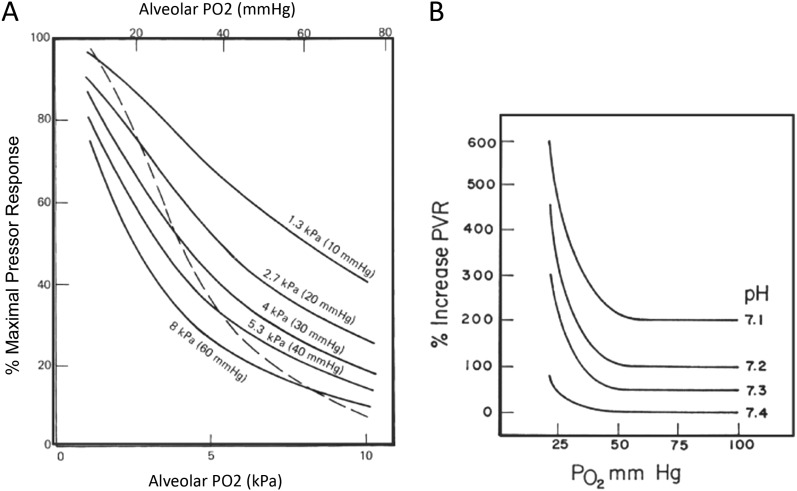Figure 4.
Effect of oxygen tension and acidemia on pulmonary vasoconstriction. (A) Pulmonary vasoconstriction increases as alveolar O2 tension (PAO2) falls while keeping mixed venous oxygenation constant (mixed venous Po2 indicated for each solid line from 60 to 10 mm Hg). The combined effect of allowing PAO2 and mixed venous Po2 to fall is shown by the dashed line where PAO2 and mixed venous oxygen saturation O2 are the same (34). Maximal pulmonary vasoconstrictor response was defined as the difference between baseline pulmonary artery pressure when ventilating with an FiO2 of 0.21 and perfusate FIO2 of 0.06, and the pulmonary artery pressure when both the inspired and the perfusate FiO2 was zero. The pressure response at all other combinations of inspired and perfusate FiO2 were expressed as a percent of this 10 maximum (%Rmax). (B) Pulmonary vasoconstriction in newborn calves as a function of inspired Po2 under conditions of different levels of arterial blood pH. Hypoxic pulmonary vasoconstriction is increased and occurs at a higher level of inspired O2 as arterial pH is decreased. PVR = pulmonary vascular resistance. Reproduced by permission from Reference 34.

